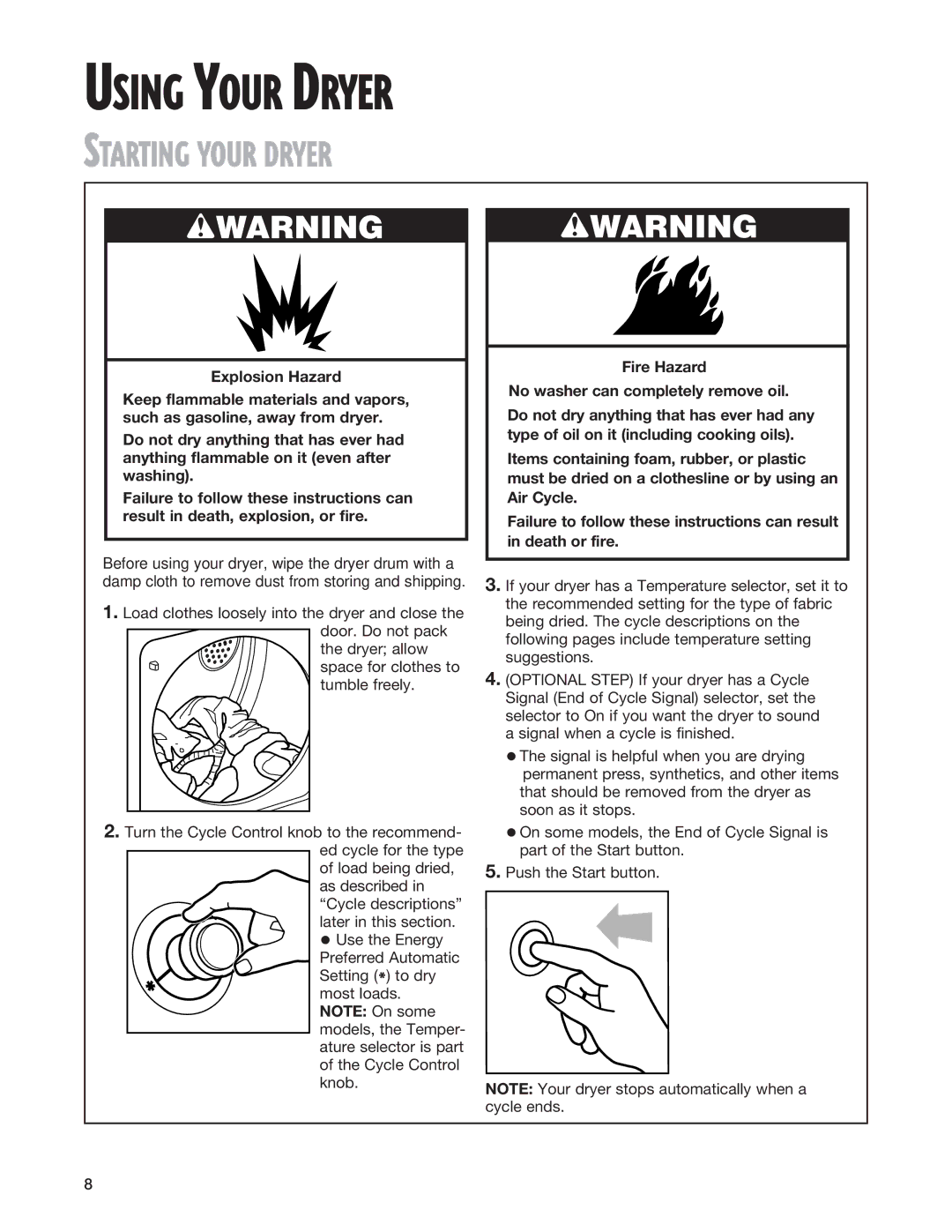
USING YOUR DRYER
STARTING YOUR DRYER
wWARNING
Explosion Hazard
Keep flammable materials and vapors, such as gasoline, away from dryer.
Do not dry anything that has ever had anything flammable on it (even after washing).
Failure to follow these instructions can result in death, explosion, or fire.
Before using your dryer, wipe the dryer drum with a damp cloth to remove dust from storing and shipping.
1.Load clothes loosely into the dryer and close the door. Do not pack
the dryer; allow space for clothes to tumble freely.
2.Turn the Cycle Control knob to the recommend- ed cycle for the type of load being dried, as described in “Cycle descriptions” later in this section.
• Use the Energy Preferred Automatic
Setting (*) to dry most loads. NOTE: On some models, the Temper- ature selector is part of the Cycle Control knob.
wWARNING
Fire Hazard
No washer can completely remove oil.
Do not dry anything that has ever had any type of oil on it (including cooking oils).
Items containing foam, rubber, or plastic must be dried on a clothesline or by using an Air Cycle.
Failure to follow these instructions can result in death or fire.
3.If your dryer has a Temperature selector, set it to the recommended setting for the type of fabric being dried. The cycle descriptions on the following pages include temperature setting suggestions.
4.(OPTIONAL STEP) If your dryer has a Cycle Signal (End of Cycle Signal) selector, set the selector to On if you want the dryer to sound a signal when a cycle is finished.
•The signal is helpful when you are drying permanent press, synthetics, and other items that should be removed from the dryer as soon as it stops.
•On some models, the End of Cycle Signal is part of the Start button.
5.Push the Start button.
NOTE: Your dryer stops automatically when a cycle ends.
8
